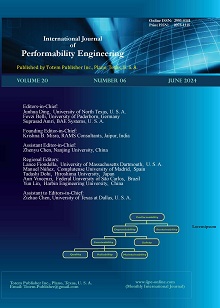-
Data-Driven Security Framework for VANET using Firefly and ANN
- Abhishek Gupta and Jaspreet Singh
-
2024, 20(6):
344-354.
doi:10.23940/ijpe.24.06.p2.344354
-
 Abstract
Abstract
 PDF (694KB)
PDF (694KB)

-
References |
Related Articles
Within the domain of network intrusion detection, this study conducts a comprehensive evaluation of machine learning models using both aggregated route data and the NSL-KDD dataset. The evaluation encompasses an array of quantitative and qualitative parameters, including crucial Quality of Service (QoS) metrics. A distinctive feature of this research is the application of the Firefly algorithm to fine-tune neural networks, thereby optimizing predictive capabilities. The study consistently highlights the superiority of the proposed Firefly-tuned Neural model, showcasing excellence in precision, recall, F-measure, accuracy, and QoS parameters. It also includes an approach that coordinates the K-means++ algorithm for careful data segmentation and fuzzy logic for the fine-grained assignment of membership degrees. The study highlights how important model selection is to cybersecurity and provides priceless information on the advantages of various algorithms. In conclusion, the amalgamation of route data clustering, Firefly algorithm optimization, and a comprehensive assessment of QoS parameters promises significant advancements in network intrusion detection systems. Future research should explore the real-world adaptability and scalability of these techniques, fortifying network security against evolving threats and intricate environments while simultaneously enhancing QoS.

